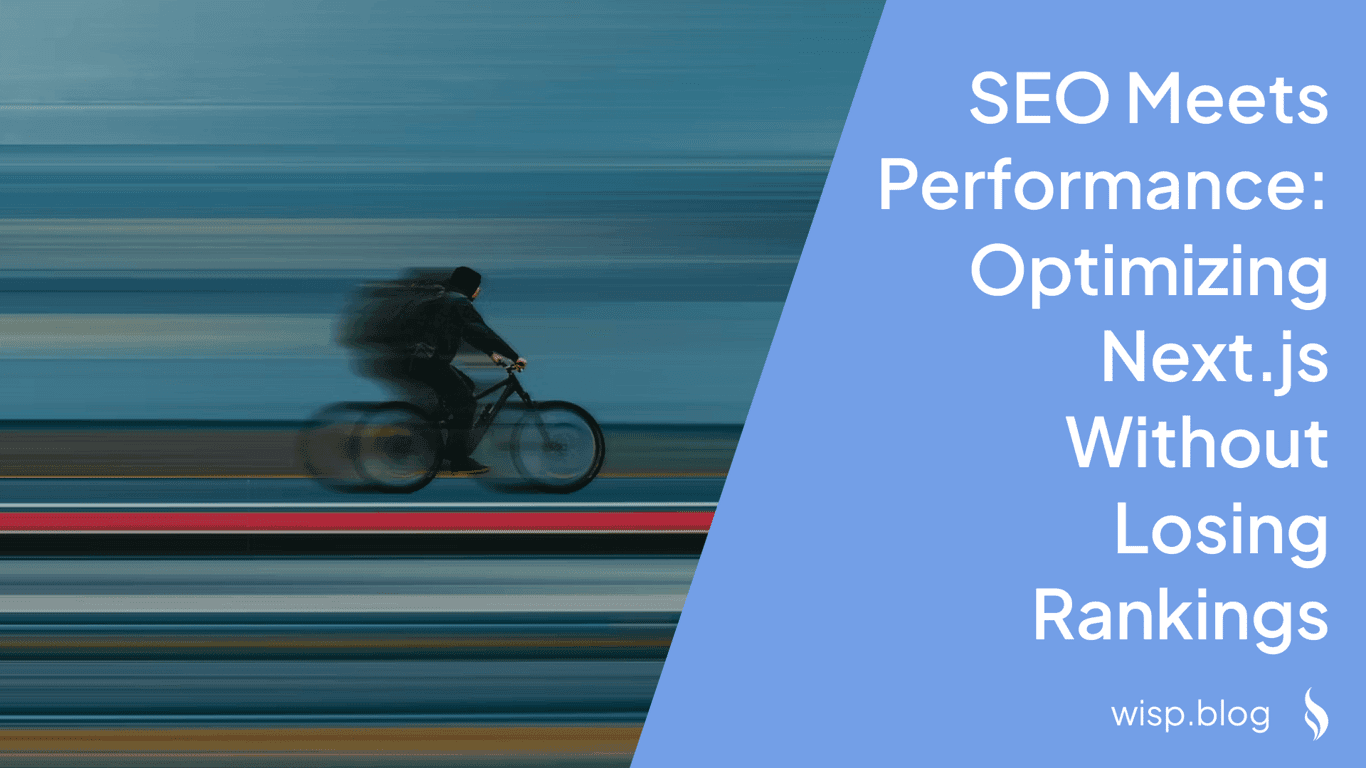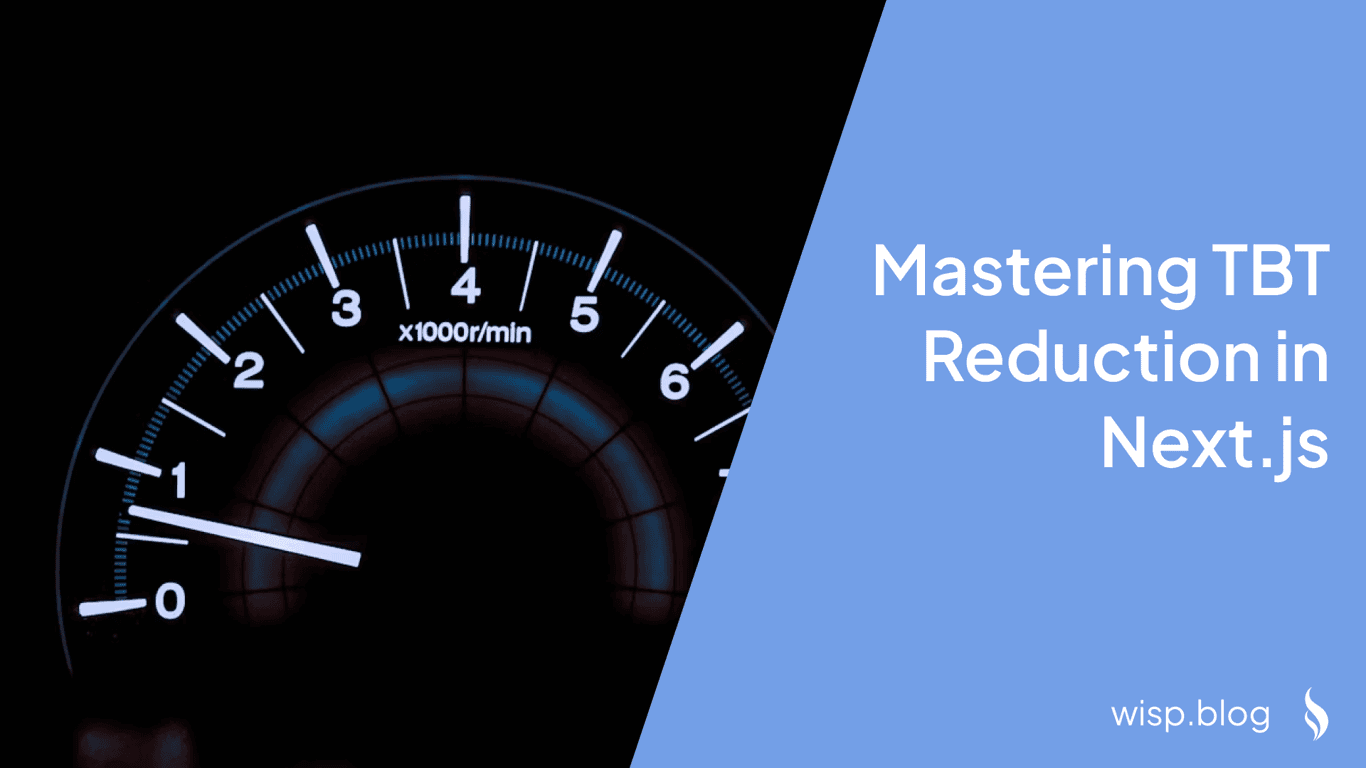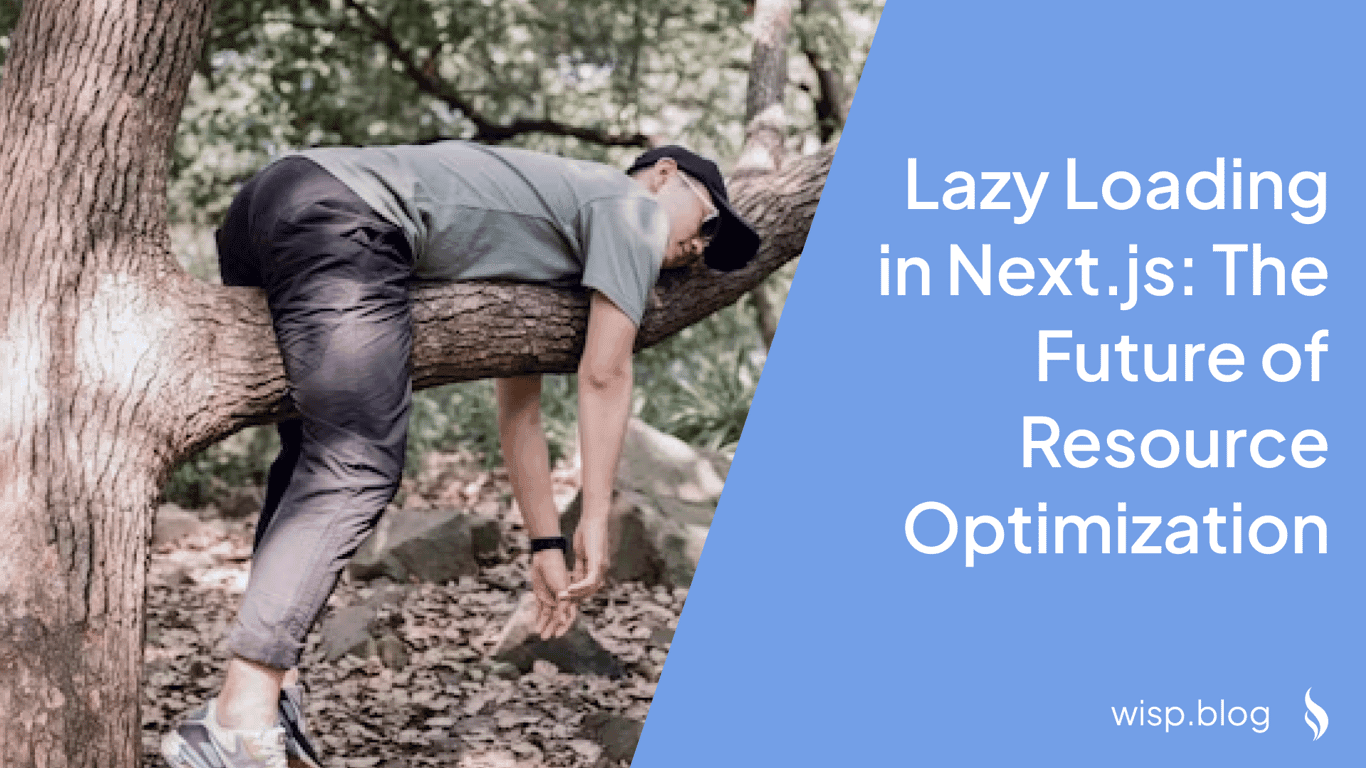 You've optimized your React application with server-side rendering for better SEO and faster initial page loads. But when you check your Lighthouse scores, you're shocked to see a poor Total Blocking Time (TBT) metric dragging down your overall performance. Even worse, users complain about clicking buttons that don't respond immediately after the page loads.
You've optimized your React application with server-side rendering for better SEO and faster initial page loads. But when you check your Lighthouse scores, you're shocked to see a poor Total Blocking Time (TBT) metric dragging down your overall performance. Even worse, users complain about clicking buttons that don't respond immediately after the page loads.
What's happening? You've stumbled upon one of the most misunderstood aspects of modern React development—the hydration process.
What is React Hydration?
Hydration is the process where React takes static HTML generated on the server and transforms it into a fully interactive application on the client. It's like pouring life into a static skeleton, attaching event listeners and establishing state management to make your application responsive to user interactions.
The term "hydration" itself is a metaphor—imagine server-rendered HTML as dehydrated components that need to be "hydrated" with JavaScript to become fully functional.
// Server-side rendering creates static HTML
const html = ReactDOMServer.renderToString(<App />);
// Client-side hydration makes it interactive
ReactDOM.hydrateRoot(document.getElementById('root'), <App />);
If you've ever found yourself confused despite reading documentation and tutorials, you're not alone. As one developer on Reddit put it:
"Yes, I've done the Google search and ChatGPT stuff. Still don't get it."
The Critical Role of Hydration in Performance
Hydration directly impacts key performance metrics that affect both user experience and SEO:
Total Blocking Time (TBT): Makes up 30% of your Lighthouse score
First Input Delay (FID): Measures how long it takes for a user's first interaction to be processed
Time to Interactive (TTI): Indicates when your page becomes fully interactive
By default, React hydrates the entire page at once—even components that aren't immediately visible to the user. This approach causes unnecessary JavaScript execution that blocks the main thread, leading to poor TBT scores and frustrated users who experience input lag.
How Hydration Works in Next.js
Next.js, one of the most popular React frameworks, implements hydration as part of its rendering strategy. Here's the step-by-step process:
Server-Side Rendering: The server executes React components to generate HTML
HTML Delivery: This pre-rendered HTML is sent to the client
JavaScript Loading: The browser downloads and executes the JavaScript bundle
Hydration: React "attaches" to the HTML, adding event listeners and state
As one developer explains:
"The server sends the client HTML along with a link to the JS to download. The JS gets downloaded and then 'hydrates' the page taking it from a plain page to one with interactivity meaning adding handlers to buttons, events to elements on the page like onClick and so forth."
This process provides the best of both worlds: fast initial loading through server rendering and full interactivity through client-side hydration.
Common Hydration Challenges
Despite its benefits, hydration introduces several challenges that developers frequently encounter:
1. Performance Issues
The most significant challenge is performance degradation. By default, React hydrates everything at once, which can lead to:
Long Total Blocking Time (TBT) as JavaScript executes
Delayed interactivity for user inputs
Poor Lighthouse scores that impact SEO rankings
2. Hydration Errors
Another common issue is hydration mismatch errors, which occur when the client-side rendering doesn't match the server-rendered HTML:
Warning: Text content did not match. Server: "Server Text" Client: "Client Text"
These errors often happen when:
Components render differently based on environment conditions
Time-dependent data changes between server and client renders
Third-party libraries manipulate the DOM outside of React's control
3. Bundle Size Bloat
Since hydration requires the full JavaScript for all components, bundle sizes can grow large, increasing download times and execution overhead.
Optimizing Hydration for Better Performance
Now that we understand the challenges, let's explore practical strategies to optimize hydration in Next.js applications.
1. Selective Hydration with Progressive Loading
Instead of hydrating everything at once, we can prioritize above-the-fold content and delay the hydration of less critical components.
In Next.js, we can implement this using dynamic imports with the next/dynamic component:
import dynamic from 'next/dynamic';
// This component will only be loaded and hydrated when needed
const LazyComponent = dynamic(() => import('../components/HeavyComponent'), {
loading: () => <p>Loading...</p>,
ssr: true, // Still render on server but delay hydration
});
This approach significantly reduces TBT by spreading out JavaScript execution over time rather than blocking the main thread all at once.
2. Lazy Hydration Based on Visibility
One powerful technique is to hydrate components only when they enter the viewport, similar to Astro's client:visible directive. While Next.js doesn't offer this natively, we can implement it using the IntersectionObserver API.
A developer on Reddit shared a library specifically designed for this purpose:
"I took these two tricks and made a library based on them. It's called next-lazy-hydration-on-scroll."
This library (next-lazy-hydration-on-scroll) can be particularly useful for below-the-fold client components, deferring their hydration until the user scrolls to them.
Implementation looks like this:
import { LazyHydrate } from 'next-lazy-hydration-on-scroll';
function MyPage() {
return (
<>
<Header /> {/* Hydrated immediately */}
<LazyHydrate>
<ComplexInteractiveComponent /> {/* Hydrated when visible */}
</LazyHydrate>
</>
);
}
This approach can reduce TBT by up to 40% in some applications, dramatically improving performance metrics and user experience.
3. Server Components in Next.js App Router
With Next.js 13+ and its App Router, React Server Components provide a new approach to reduce client-side JavaScript completely:
// app/page.jsx - This is a Server Component by default
export default async function Page() {
// This code only runs on the server
const data = await fetchData();
return (
<div>
<ServerRenderedContent data={data} />
<ClientComponent /> {/* Only this requires hydration */}
</div>
);
}
// ClientComponent.jsx
'use client'; // Marks this as requiring client-side hydration
export default function ClientComponent() {
// Interactive component code
}
Server Components don't need hydration at all because they never execute on the client, dramatically reducing JavaScript payload and improving performance.
4. Streaming and Suspense
Next.js supports React's Suspense API for streaming HTML from the server, allowing the page to be progressively rendered:
import { Suspense } from 'react';
export default function Page() {
return (
<>
<InstantlyLoadedContent />
<Suspense fallback={<Loading />}>
<SlowDataComponent />
</Suspense>
</>
);
}
When combined with selective hydration, streaming can significantly improve perceived performance by showing content faster while deferring hydration of complex parts.
Advanced Techniques for Hydration Optimization
Let's dive deeper into techniques that can help you fine-tune hydration in your Next.js applications.
1. Using suppressHydrationWarning Strategically
When you intentionally have differences between server and client rendering, React provides the suppressHydrationWarning prop to avoid error messages:
function TimeComponent() {
const [time, setTime] = useState(new Date().toLocaleTimeString());
// Update time on client after hydration
useEffect(() => {
const timer = setInterval(() => {
setTime(new Date().toLocaleTimeString());
}, 1000);
return () => clearInterval(timer);
}, []);
// Suppress warning for time difference between server and client
return <div suppressHydrationWarning>{time}</div>;
}
This should be used sparingly and only for content that you know will differ between server and client.
2. Partial Hydration with Static Content
Another effective approach is to identify truly static content that never needs interactivity and exclude it from hydration entirely.
You can achieve this by using dangerouslySetInnerHTML for static content:
function StaticContent({ html }) {
return <div dangerouslySetInnerHTML={{ __html: html }} />;
}
While this approach requires careful sanitization to prevent XSS vulnerabilities, it can dramatically reduce hydration costs for content-heavy pages.
3. Optimizing Client Components Size
When using client components in Next.js App Router, minimize their size to reduce hydration overhead:
Code splitting: Break large client components into smaller ones
Tree-shaking: Ensure unused code is eliminated from bundles
Dependency optimization: Be mindful of large third-party libraries
// Bad: Large client component with many dependencies
'use client';
import { BigLibrary } from 'huge-package';
// Better: Minimal client component
'use client';
import { onlyWhatINeed } from 'huge-package/specific-module';
4. Strategic Use of useEffect for Post-Hydration Logic
Sometimes certain operations should only run after hydration is complete. Use the useEffect hook with an empty dependency array for this purpose:
'use client';
import { useEffect, useState } from 'react';
export default function EnhancedExperience() {
const [isHydrated, setIsHydrated] = useState(false);
// This runs after hydration is complete
useEffect(() => {
setIsHydrated(true);
}, []);
return (
<div>
{isHydrated ? (
<ComplexInteractiveFeature />
) : (
<SimplePlaceholder />
)}
</div>
);
}
This pattern allows you to show a simpler version during initial render and hydration, then enhance the experience once hydration is complete.
Measuring Hydration Performance
To optimize effectively, you need to measure hydration performance. Here are key ways to do this:
1. Using Chrome DevTools Performance Tab
The Performance tab in Chrome DevTools provides a timeline of your page's loading and execution:
Open DevTools (F12)
Go to the Performance tab
Click Record and reload the page
Look for "scripting" time and long tasks during hydration
2. Lighthouse Metrics
Pay special attention to these Lighthouse metrics, which are heavily influenced by hydration:
Total Blocking Time (TBT): Measures time when the main thread is blocked
Time to Interactive (TTI): Indicates when the page is fully interactive
Largest Contentful Paint (LCP): Measures loading performance
3. Web Vitals in Production
Collect real-user metrics using the web-vitals library:
// pages/_app.js
import { useEffect } from 'react';
import { getCLS, getFID, getLCP } from 'web-vitals';
function reportWebVitals({ name, value }) {
// Send to your analytics service
console.log(name, value);
}
function MyApp({ Component, pageProps }) {
useEffect(() => {
getCLS(reportWebVitals);
getFID(reportWebVitals);
getLCP(reportWebVitals);
}, []);
return <Component {...pageProps} />;
}
export default MyApp;
This gives you real-world data on how hydration affects your users' experience.
Best Practices for Hydration in Next.js
Based on all the techniques we've covered, here are the key best practices to follow:
1. Plan Your Hydration Strategy Early
Don't treat hydration as an afterthought. Consider it from the beginning of your project:
Identify which components truly need interactivity
Determine which components can be server components
Plan your component hierarchy to support selective hydration
2. Minimize Client-Side JavaScript
The less JavaScript you send to the client, the less hydration work is needed:
Use React Server Components where possible
Consider static alternatives for simple UI elements
Be judicious with third-party libraries that add to your bundle size
3. Prioritize Above-the-Fold Content
Always optimize what users see first:
Ensure above-the-fold content hydrates quickly
Defer hydration of off-screen content
Use placeholders or loading states while waiting for hydration
4. Balance SEO and Interactivity Needs
Different parts of your application have different requirements:
Content-focused pages may need less hydration but more SEO optimization
Application-focused pages may prioritize quick interactivity
Tailor your approach based on the specific needs of each page
5. Test on Representative Devices
Performance on your development machine isn't representative of real-world conditions:
Test on mid-range mobile devices
Use throttling in DevTools to simulate slower connections
Collect field data from real users when possible
Future of Hydration in React and Next.js
The React and Next.js teams are actively working on improving hydration performance:
React 18's Concurrent Rendering
React 18 introduced concurrent rendering, which allows React to split hydration work into smaller chunks and yield to the browser for user interactions:
// React 18 hydration API
import { hydrateRoot } from 'react-dom/client';
hydrateRoot(document.getElementById('root'), <App />);
This new approach, combined with Suspense, enables more granular hydration that doesn't block the main thread as heavily.
Selective Hydration in React
React is working on built-in selective hydration that will automatically prioritize hydrating the parts of the UI that the user is interacting with:
<Suspense fallback={<Spinner />}>
<Comments />
</Suspense>
With selective hydration, if a user clicks on an element inside Comments before it's hydrated, React will prioritize hydrating that component first.
Server Components Evolution
React Server Components are still evolving, with more capabilities coming to reduce the need for client-side JavaScript and hydration:
Better integration with data fetching
More sophisticated patterns for server/client component composition
Improved tooling for analyzing component boundaries
Conclusion: Finding the Right Balance
Optimizing hydration isn't about eliminating it completely—it's about finding the right balance for your specific application. The key is to hydrate only what's necessary, when it's necessary.
By implementing the strategies we've explored:
Selective and progressive hydration to prioritize critical interactions
Server Components to eliminate hydration needs for non-interactive parts
Visibility-based hydration to defer work until components are seen
Performance monitoring to identify hydration bottlenecks
You can dramatically improve the performance of your Next.js applications, resulting in better user experiences, higher conversion rates, and improved SEO rankings.
Remember that the perfect hydration strategy depends on your specific application needs. Start by measuring your current performance, implement the techniques most relevant to your bottlenecks, and continuously refine your approach based on real-world data.
As one developer wisely noted:
"There is no magic library—you need to analyze yourself, use dynamic import and SSR strategically."
By understanding hydration deeply and applying these optimization techniques, you'll unlock the true performance potential of your React and Next.js applications.
Additional Resources
For those looking to dive deeper into hydration optimization:
Web.dev Core Web Vitals for understanding performance metrics
Next-lazy-hydration-on-scroll library for visibility-based hydration
React Server Components Demo for hands-on exploration
By applying the techniques and best practices discussed in this article, you'll be well on your way to creating blazing-fast React applications with optimized hydration processes that delight users and boost your performance metrics.



